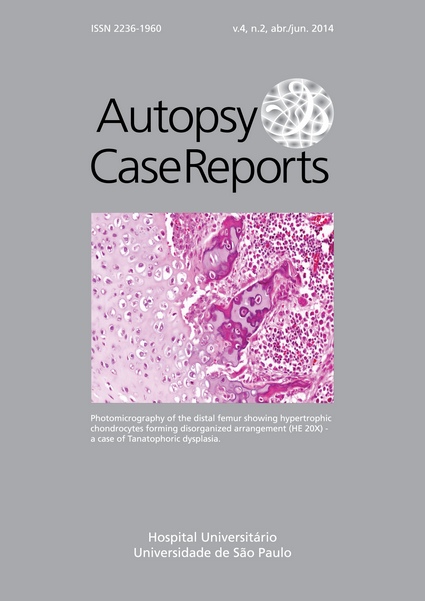Thanatophoric dysplasia: case report of an autopsy complemented by postmortem computed tomographic study
DOI:
https://doi.org/10.4322/acr.%25y.82533Keywords:
Thanatophoric Dysplasia, Tomography, Spiral Computed, AutopsyAbstract
Thanatophoric dysplasia (TD) is one of the most common lethal skeletal dysplasias, which was first designated as thanatophoric dwarfism and described in 1967. The authors report a case of a Caucasian girl with TD, born to a 31-year-old woman without comorbidities. The newborn presented respiratory distress immediately after delivery, progressing to death in less than 2 hours. An autopsy was carried out after postmortem tomographic examination. The autopsy findings depicted extensive malformations of the skeletal system and the brain. The aim of this report is to discuss the pathogenesis and correlate the morphologic features of TD that were disclosed at the tomography and the autopsy.Downloads
Download data is not yet available.
Downloads
Published
2014-06-26
Issue
Section
Article / Autopsy Case Report
License
Copyright
Authors of articles published by Autopsy and Case Report retain the copyright of their work without restrictions, licensing it under the Creative Commons Attribution License - CC-BY, which allows articles to be re-used and re-distributed without restriction, as long as the original work is correctly cited.
How to Cite
Mayoral, Éber E., Schultz, R., Rosemberg, S., Suzuki, L., Oliveira, L. A. N. de, & Kay, F. U. (2014). Thanatophoric dysplasia: case report of an autopsy complemented by postmortem computed tomographic study. Autopsy and Case Reports, 4(2), 35-41. https://doi.org/10.4322/acr.%y.82533



